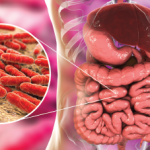“There are new techniques for the identification of pathogenic T-cell epitopes in RA or other forms of chronic inflammatory arthritis,” he said. “Knowledge of pathogenic T-cell epitopes could lead to new small molecule therapies in RA, which may provide the next leap in therapies for this illness.”
According to Ted R. Mikuls, MD, MSPH, professor of internal medicine in the division of rheumatology at Omaha VA Medical Center and the University of Nebraska Medical Center in Omaha, who presented research on the association between RA and P. gingivalis, Dr. Steere’s highly innovative approach is exciting because it is poised as a platform for discovery. “Using this approach, we might, for example, begin to identify mechanisms linking oral pathogens such as P. gingivalis with RA,” he said. “Identifying these mechanisms will be central to the development of immune-based interventions that could subsequently be exploited in disease treatment and even prevention.”
The Association Between Oral Pathogens with RA
Dr. Mikuls presented the results of a study that provides further insight into the association of gum disease and P. gingivalis infection with RA risk. He shared the results of a two-aim study undertaken to address several unanswered questions. Among these are whether the association of periodontal disease with RA is driven by shared risk factors (i.e., smoking, HLA-DRB1) or by oral bacterial that causes periodontal disease (P. gingivalis), and whether periodontal disease causes RA or whether it is simply a direct or indirect manifestation of RA.
The case-control study included 617 patients, 287 with RA (cases) and 330 with osteoarthritis (controls) with similar baseline characteristics. (The findings of the study were reported in Abstract 1378.) Patients underwent a standardized exam for periodontal disease (defined as clinical attachment loss >6 mm for 2 or more teeth and one or more sites with a probing depth >5 mm). The study found that periodontal disease was significantly more common in all patients with RA compared to controls (35% vs. 26%, P=0.02) as well as patients with anticyclic citrullinated peptide (aCCP)–positive RA (37% vs. 26%, P=0.007). On multivariate analysis, the study found that the association of periodontal disease with established aCCP-positive RA was independent of shared risk factors including smoking and HLA-DRB1, and also appeared independent of other factors including medication use, comorbidity, and oral hygiene. Another finding was that significantly more patients with periodontal disease had increased RA disease severity.
The study also looked at whether there were neo-epitopes driving the relationship between periodontal disease and RA and identified several preliminary epitopes (such as filaggrin) that could drive the relationship.

